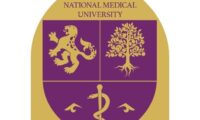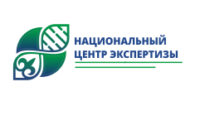DOI 10.53511/PHARMKAZ.2023.24.12.026
Е.И. Дуйсебаев1, У.Р. Мирзакулова2 , Д.А. Оспанова 3, Ж.А. Кожекенова2,Г.Е. Аимбетова2, М.А. Рамазанова2, А.Е. Турсынбекова4
1Казахстанский медицинский университет «ВШОЗ» , Республика Казахстан
2НАО Казахский Национальный Медицинский Университет имени С.Ж.Асфендиярова, Республика Казахстан
3НАО Казхский Национальный университет им. Аль-Фараби, Республика Казахстан
4ГКП на ПХВ городская клиническая больница №5, Республика Казахстан
ОЦЕНКА КАЧЕСТВА И БЕЗОПАСНОСТИ СТОМАТОЛОГИЧЕСКОЙ ПОМОЩИ
НА ПРИМЕРЕ ЕВРОПЕЙСКИХ СТРАН: ЛИТЕРАТУРНЫЙ ОБЗОР
Резюме: Актуальность. Качество и безопасность оказываемой стоматологической помощи являются важными вопросами в медицинской практике. Для оценки безопасности и качества оказания
стоматологической помощи необходимо использовать валидный инструмент. В данной статье
рассматриваются методы оценки безопасности стоматологической помощи на примере трех европейских стран: Швейцарии, Германии и Франции.
Ключевые слова: стоматологическая помощь, качество медицинской помощи, безопасность медицинской помощи
СПИСОК ЛИТЕРАТУРЫ
1 K. Marsh. Estimating cost-effectiveness in public health: A summary of modelling and valuation methods. Health Econ Rev. 2012;2(1):17
2 Cleary PD. Evolving concepts of patient-centered care and the assessment of patient care experiences: optimism and opposition. J Health Polit Policy Law
2016;41(4):675–96.
3 DiCuccio MH. The relationship between patient safety culture and patient outcomes: A systematic review. J Patient Saf. 2015;11:135–142
4 Friedberg MW, SteelFisher GK, Karp M, Schneider EC. Physician groups’ use of data from patient experience surveys. J Gen Intern Med. 2011;26(5):498-
504. doi:10.1007/s11606-010-1597-1
5 Jossen M, Valeri F, Heilmaier C, Schwappach D. Assessment of the safety climate in outpatient diagnostic services: Development and psychometric
evaluation of a questionnaire. Eur Radiol. 2019;29(3):1538-1545. doi:10.1007/s00330-018-5646-1
6 Mascherek AC, Schwappach DLB. Patient safety climate profiles across time: Strength and level of safety climate associated with a quality improvement
program in Switzerland-A cross-sectional survey study. PLoS One. 2017;12(7):e0181410. doi:10.1371/journal.pone.0181410
7 Weaver SJ, Lubomksi LH, Wilson RF et al. Promoting a culture of safety as a patient safety strategy. A systematic review. Ann Intern Med. 2013; 158:369-374.
8 Jossen M, Valeri F, Heilmaier C, Schwappach D. Referring Physicians Assess the Quality of Outpatient Diagnostic Imaging Services: Development and
Psychometric Evaluation of a Questionnaire. Rofo. 2019;191(8):725-731. doi:10.1055/a-0805-1158
9 McMenamy J, Rosenkrantz AB, Jacobs J et al. Use of a referring physician survey to direct and evaluate department-wide radiology quality improvement
efforts. J Am Coll Radiol. 2015;12:1223–1225
10 Weiner BJ, Lewis CC, Stanick C et al. Psychometric assessment of three newly developed implementation outcome measures. Implement Sci. 2017; 12:108
11 Welti F. Das SGB IX in der Entwicklung des Sozialrechts1 [The SGB IX, book 9 of the German social code, in the development of social security law].
Rehabilitation (Stuttg). 2002;41(4):268-273. doi:10.1055/s-2002-33268
12 Holmström I, Röing M. The relation between patient-centeredness and patient empowerment: a discussion on concepts. Patient Educ Couns. 2010;
79(2):167–172. doi:10.1016/j.pec.2009.08.008
13 Lucius-Hoene G, Groth S, Becker AK, Dvorak F, Breuning M, Himmel W. What it means for patients to have their illness experiences published in the
Internet. Rehabilitation (Stuttg). 2013;52(3):196-201. doi:10.1055/s-0033-1343492
14 Castro EM, Van Regenmortel T, Vanhaecht K, Sermeus W, Van Hecke A. Patient empowerment, patient participation and patient-centeredness in hospital
care: A concept analysis based on a literature review. Patient Educ Couns. 2016;99(12):1923-1939. doi:10.1016/j.pec.2016.07.026
15 Mancuso JM. Assessment and measurement of health literacy: an integrative review of the literature. Nurs Health Sci. 2009;11(1):77–89. doi:10. 1111/j.1442-
2018.2008.00408.x
16 Breuning M, Lucius-Hoene G, Burbaum C, Himmel W, Bengel J. Patient experiences and patient centeredness: The website project DIPEx Germany.
Bundesgesundheitsblatt Gesundheitsforschung Gesundheitsschutz. 2017;60(4):453-461. doi:10.1007/s00103-017-2524-y
17 Koschack J, Weibezahl L, Friede T, Himmel W, Makedonski P, Grabowski J. Scientific versus experiential evidence: discourse analysis of the chronic
cerebrospinal venous insufficiency debate in a multiple sclerosis forum. J Med Internet Res 2015;17(7):159. doi:10.2196/jmir.4103
18 Schulz PJ, Nakamoto K. Health literacy and patient empowerment in health communication: the importance of separating conjoined twins. Patient Educ
Couns. 2013;90(1):4–11. doi:10.1016/j.pec. 2012.09.006
19 Farin E. Patientenorientierung in der Rehabilitation. Übersicht über den aktuellen Forschungsstand. Z Rheumatol. 2014;73(1):35–41. doi:10.1007/s00393-
013-1208-8
20 World Alliance For Patient Safety Drafting Group, Sherman H, Castro G, et al. Towards an International Classification for Patient Safety: the conceptual
framework. Int J Qual Health Care. 2009;21(1):2-8. doi:10.1093/intqhc/mzn054
21 Müller A, Sawicki OA, Müller H, et al. Patient perspectives on patient safety: Results of a population-based survey in Germany. Z Evid Fortbild Qual
Gesundhwes. 2021;165:13-20. doi:10.1016/j.zefq.2021.07.004
22 Müller BS, Donner-Banzhoff N, Beyer M, Haasenritter J, Müller A, Seifart C. Regret among primary care physicians: a survey of diagnostic decisions. BMC
Fam Pract. 2020;21(1):53. doi:10.1186/s12875-020-01125-w
23 Has-sante.fr. Comprendre pour agir sur les événements indésirables associés aux soins (EIAS) [Site internet]. Saint-Denis La Plaine: Haute Autorité de santé
(HAS); 2015 [Accès le 14 mai 2020. Disponible en ligne à l’adresse : https://www.has-sante.fr/jcms/c2011561/fr/comprendre-pour-agir-sur-lesevenementsindesirables-associes-aux-soins-eias].
24 Indicateurs de qualité et de sécurité des soins en établissements de santé. Haute Autorite de Sante. Avaliable at: https://www.has-sante.fr/jcms/c_970481/
fr/campagnes-nationales-developpements-et-experimentations-des-indicateurs-de-qualite-et-de-securite-des-soins-iqss
25 Comprendre les indicateurs. Haute Autorite de Sante. Avaliable at: https://www.has-sante.fr/jcms/c_970481/fr/campagnes-nationales-developpements-etexperimentations-des-indicateurs-de-qualite-et-de-securite-des-soins-iqss
26 Has-sante.fr. Saed: un guide pour faciliter la communication entre professionnels de santé [Site internet]; 2014. Saint-Denis La Plaine (France) : Haute
Autorité de Santé [accès le 14 mai 2020. Consultable sur: https://www.has-sante.fr/jcms/c1776178/fr/saed-un-guide-pour-faciliterla-communication-entreprofessionnels-de-sante].
27 Gloanec M, Capuano F, Sainte-Croix D, May-Michelangeli L. L’enquête nationale e-Satis, mesurer la satisfaction et l’expérience des patients. Soins.
2018;63(829):23-26. doi:10.1016/j.soin.2018.07.007
28 Barlési, F., Chabert-Greillier, L., Loundou, A., Siméoni, M.-C., Greillier, L., Doddoli, C. et al. Validation de la version française du Princess Margaret Hospital
Patient Satisfaction with Doctor Questionnaire (PMH/PSQ-MD): le F-PMH/PSQ MD. Revue Des Maladies Respiratoires. 2006;23(3), 227–236. doi:10.1016/
s0761-8425(06)71572-8
29 Verbruggen C, Weigert R, Corre P, Casoli V, Bondaz M. Development of the facial feminization surgery patient’s satisfaction questionnaire (QESFF1):
Qualitative phase. Ann Chir Plast Esthet. 2018;63(3):205-214. doi:10.1016/j.anplas.2017.12.003


































